Milk Powder
Whey Protein
Cheese Powder
Casein
Cream
Food and Beverages
Nutritional Products
Confectionery
Bakery
Dairy Products
Liquid
Powder
Granular
Frozen
Industrial
Retail
Food Service
North America
Europe
South America
Asia Pacific
Middle East and Africa
North America Outlook (USD Billion, 2019-2035)
North America Dairy Ingredients Market by Type
Milk Powder
Whey Protein
Cheese Powder
Casein
Cream
North America Dairy Ingredients Market by Application Type
Food and Beverages
Nutritional Products
Confectionery
Bakery
Dairy Products
North America Dairy Ingredients Market by Form Type
Liquid
Powder
Granular
Frozen
North America Dairy Ingredients Market by End Use Type
Industrial
Retail
Food Service
North America Dairy Ingredients Market by Regional Type
US
Canada
US Outlook (USD Billion, 2019-2035)
US Dairy Ingredients Market by Type
Milk Powder
Whey Protein
Cheese Powder
Casein
Cream
US Dairy Ingredients Market by Application Type
Food and Beverages
Nutritional Products
Confectionery
Bakery
Dairy Products
US Dairy Ingredients Market by Form Type
Liquid
Powder
Granular
Frozen
US Dairy Ingredients Market by End Use Type
Industrial
Retail
Food Service
CANADA Outlook (USD Billion, 2019-2035)
CANADA Dairy Ingredients Market by Type
Milk Powder
Whey Protein
Cheese Powder
Casein
Cream
CANADA Dairy Ingredients Market by Application Type
Food and Beverages
Nutritional Products
Confectionery
Bakery
Dairy Products
CANADA Dairy Ingredients Market by Form Type
Liquid
Powder
Granular
Frozen
CANADA Dairy Ingredients Market by End Use Type
Industrial
Retail
Food Service
Europe Outlook (USD Billion, 2019-2035)
Europe Dairy Ingredients Market by Type
Milk Powder
Whey Protein
Cheese Powder
Casein
Cream
Europe Dairy Ingredients Market by Application Type
Food and Beverages
Nutritional Products
Confectionery
Bakery
Dairy Products
Europe Dairy Ingredients Market by Form Type
Liquid
Powder
Granular
Frozen
Europe Dairy Ingredients Market by End Use Type
Industrial
Retail
Food Service
Europe Dairy Ingredients Market by Regional Type
Germany
UK
France
Russia
Italy
Spain
Rest of Europe
GERMANY Outlook (USD Billion, 2019-2035)
GERMANY Dairy Ingredients Market by Type
Milk Powder
Whey Protein
Cheese Powder
Casein
Cream
GERMANY Dairy Ingredients Market by Application Type
Food and Beverages
Nutritional Products
Confectionery
Bakery
Dairy Products
GERMANY Dairy Ingredients Market by Form Type
Liquid
Powder
Granular
Frozen
GERMANY Dairy Ingredients Market by End Use Type
Industrial
Retail
Food Service
UK Outlook (USD Billion, 2019-2035)
UK Dairy Ingredients Market by Type
Milk Powder
Whey Protein
Cheese Powder
Casein
Cream
UK Dairy Ingredients Market by Application Type
Food and Beverages
Nutritional Products
Confectionery
Bakery
Dairy Products
UK Dairy Ingredients Market by Form Type
Liquid
Powder
Granular
Frozen
UK Dairy Ingredients Market by End Use Type
Industrial
Retail
Food Service
FRANCE Outlook (USD Billion, 2019-2035)
FRANCE Dairy Ingredients Market by Type
Milk Powder
Whey Protein
Cheese Powder
Casein
Cream
FRANCE Dairy Ingredients Market by Application Type
Food and Beverages
Nutritional Products
Confectionery
Bakery
Dairy Products
FRANCE Dairy Ingredients Market by Form Type
Liquid
Powder
Granular
Frozen
FRANCE Dairy Ingredients Market by End Use Type
Industrial
Retail
Food Service
RUSSIA Outlook (USD Billion, 2019-2035)
RUSSIA Dairy Ingredients Market by Type
Milk Powder
Whey Protein
Cheese Powder
Casein
Cream
RUSSIA Dairy Ingredients Market by Application Type
Food and Beverages
Nutritional Products
Confectionery
Bakery
Dairy Products
RUSSIA Dairy Ingredients Market by Form Type
Liquid
Powder
Granular
Frozen
RUSSIA Dairy Ingredients Market by End Use Type
Industrial
Retail
Food Service
ITALY Outlook (USD Billion, 2019-2035)
ITALY Dairy Ingredients Market by Type
Milk Powder
Whey Protein
Cheese Powder
Casein
Cream
ITALY Dairy Ingredients Market by Application Type
Food and Beverages
Nutritional Products
Confectionery
Bakery
Dairy Products
ITALY Dairy Ingredients Market by Form Type
Liquid
Powder
Granular
Frozen
ITALY Dairy Ingredients Market by End Use Type
Industrial
Retail
Food Service
SPAIN Outlook (USD Billion, 2019-2035)
SPAIN Dairy Ingredients Market by Type
Milk Powder
Whey Protein
Cheese Powder
Casein
Cream
SPAIN Dairy Ingredients Market by Application Type
Food and Beverages
Nutritional Products
Confectionery
Bakery
Dairy Products
SPAIN Dairy Ingredients Market by Form Type
Liquid
Powder
Granular
Frozen
SPAIN Dairy Ingredients Market by End Use Type
Industrial
Retail
Food Service
REST OF EUROPE Outlook (USD Billion, 2019-2035)
REST OF EUROPE Dairy Ingredients Market by Type
Milk Powder
Whey Protein
Cheese Powder
Casein
Cream
REST OF EUROPE Dairy Ingredients Market by Application Type
Food and Beverages
Nutritional Products
Confectionery
Bakery
Dairy Products
REST OF EUROPE Dairy Ingredients Market by Form Type
Liquid
Powder
Granular
Frozen
REST OF EUROPE Dairy Ingredients Market by End Use Type
Industrial
Retail
Food Service
APAC Outlook (USD Billion, 2019-2035)
APAC Dairy Ingredients Market by Type
Milk Powder
Whey Protein
Cheese Powder
Casein
Cream
APAC Dairy Ingredients Market by Application Type
Food and Beverages
Nutritional Products
Confectionery
Bakery
Dairy Products
APAC Dairy Ingredients Market by Form Type
Liquid
Powder
Granular
Frozen
APAC Dairy Ingredients Market by End Use Type
Industrial
Retail
Food Service
APAC Dairy Ingredients Market by Regional Type
China
India
Japan
South Korea
Malaysia
Thailand
Indonesia
Rest of APAC
CHINA Outlook (USD Billion, 2019-2035)
CHINA Dairy Ingredients Market by Type
Milk Powder
Whey Protein
Cheese Powder
Casein
Cream
CHINA Dairy Ingredients Market by Application Type
Food and Beverages
Nutritional Products
Confectionery
Bakery
Dairy Products
CHINA Dairy Ingredients Market by Form Type
Liquid
Powder
Granular
Frozen
CHINA Dairy Ingredients Market by End Use Type
Industrial
Retail
Food Service
INDIA Outlook (USD Billion, 2019-2035)
INDIA Dairy Ingredients Market by Type
Milk Powder
Whey Protein
Cheese Powder
Casein
Cream
INDIA Dairy Ingredients Market by Application Type
Food and Beverages
Nutritional Products
Confectionery
Bakery
Dairy Products
INDIA Dairy Ingredients Market by Form Type
Liquid
Powder
Granular
Frozen
INDIA Dairy Ingredients Market by End Use Type
Industrial
Retail
Food Service
JAPAN Outlook (USD Billion, 2019-2035)
JAPAN Dairy Ingredients Market by Type
Milk Powder
Whey Protein
Cheese Powder
Casein
Cream
JAPAN Dairy Ingredients Market by Application Type
Food and Beverages
Nutritional Products
Confectionery
Bakery
Dairy Products
JAPAN Dairy Ingredients Market by Form Type
Liquid
Powder
Granular
Frozen
JAPAN Dairy Ingredients Market by End Use Type
Industrial
Retail
Food Service
SOUTH KOREA Outlook (USD Billion, 2019-2035)
SOUTH KOREA Dairy Ingredients Market by Type
Milk Powder
Whey Protein
Cheese Powder
Casein
Cream
SOUTH KOREA Dairy Ingredients Market by Application Type
Food and Beverages
Nutritional Products
Confectionery
Bakery
Dairy Products
SOUTH KOREA Dairy Ingredients Market by Form Type
Liquid
Powder
Granular
Frozen
SOUTH KOREA Dairy Ingredients Market by End Use Type
Industrial
Retail
Food Service
MALAYSIA Outlook (USD Billion, 2019-2035)
MALAYSIA Dairy Ingredients Market by Type
Milk Powder
Whey Protein
Cheese Powder
Casein
Cream
MALAYSIA Dairy Ingredients Market by Application Type
Food and Beverages
Nutritional Products
Confectionery
Bakery
Dairy Products
MALAYSIA Dairy Ingredients Market by Form Type
Liquid
Powder
Granular
Frozen
MALAYSIA Dairy Ingredients Market by End Use Type
Industrial
Retail
Food Service
THAILAND Outlook (USD Billion, 2019-2035)
THAILAND Dairy Ingredients Market by Type
Milk Powder
Whey Protein
Cheese Powder
Casein
Cream
THAILAND Dairy Ingredients Market by Application Type
Food and Beverages
Nutritional Products
Confectionery
Bakery
Dairy Products
THAILAND Dairy Ingredients Market by Form Type
Liquid
Powder
Granular
Frozen
THAILAND Dairy Ingredients Market by End Use Type
Industrial
Retail
Food Service
INDONESIA Outlook (USD Billion, 2019-2035)
INDONESIA Dairy Ingredients Market by Type
Milk Powder
Whey Protein
Cheese Powder
Casein
Cream
INDONESIA Dairy Ingredients Market by Application Type
Food and Beverages
Nutritional Products
Confectionery
Bakery
Dairy Products
INDONESIA Dairy Ingredients Market by Form Type
Liquid
Powder
Granular
Frozen
INDONESIA Dairy Ingredients Market by End Use Type
Industrial
Retail
Food Service
REST OF APAC Outlook (USD Billion, 2019-2035)
REST OF APAC Dairy Ingredients Market by Type
Milk Powder
Whey Protein
Cheese Powder
Casein
Cream
REST OF APAC Dairy Ingredients Market by Application Type
Food and Beverages
Nutritional Products
Confectionery
Bakery
Dairy Products
REST OF APAC Dairy Ingredients Market by Form Type
Liquid
Powder
Granular
Frozen
REST OF APAC Dairy Ingredients Market by End Use Type
Industrial
Retail
Food Service
South America Outlook (USD Billion, 2019-2035)
South America Dairy Ingredients Market by Type
Milk Powder
Whey Protein
Cheese Powder
Casein
Cream
South America Dairy Ingredients Market by Application Type
Food and Beverages
Nutritional Products
Confectionery
Bakery
Dairy Products
South America Dairy Ingredients Market by Form Type
Liquid
Powder
Granular
Frozen
South America Dairy Ingredients Market by End Use Type
Industrial
Retail
Food Service
South America Dairy Ingredients Market by Regional Type
Brazil
Mexico
Argentina
Rest of South America
BRAZIL Outlook (USD Billion, 2019-2035)
BRAZIL Dairy Ingredients Market by Type
Milk Powder
Whey Protein
Cheese Powder
Casein
Cream
BRAZIL Dairy Ingredients Market by Application Type
Food and Beverages
Nutritional Products
Confectionery
Bakery
Dairy Products
BRAZIL Dairy Ingredients Market by Form Type
Liquid
Powder
Granular
Frozen
BRAZIL Dairy Ingredients Market by End Use Type
Industrial
Retail
Food Service
MEXICO Outlook (USD Billion, 2019-2035)
MEXICO Dairy Ingredients Market by Type
Milk Powder
Whey Protein
Cheese Powder
Casein
Cream
MEXICO Dairy Ingredients Market by Application Type
Food and Beverages
Nutritional Products
Confectionery
Bakery
Dairy Products
MEXICO Dairy Ingredients Market by Form Type
Liquid
Powder
Granular
Frozen
MEXICO Dairy Ingredients Market by End Use Type
Industrial
Retail
Food Service
ARGENTINA Outlook (USD Billion, 2019-2035)
ARGENTINA Dairy Ingredients Market by Type
Milk Powder
Whey Protein
Cheese Powder
Casein
Cream
ARGENTINA Dairy Ingredients Market by Application Type
Food and Beverages
Nutritional Products
Confectionery
Bakery
Dairy Products
ARGENTINA Dairy Ingredients Market by Form Type
Liquid
Powder
Granular
Frozen
ARGENTINA Dairy Ingredients Market by End Use Type
Industrial
Retail
Food Service
REST OF SOUTH AMERICA Outlook (USD Billion, 2019-2035)
REST OF SOUTH AMERICA Dairy Ingredients Market by Type
Milk Powder
Whey Protein
Cheese Powder
Casein
Cream
REST OF SOUTH AMERICA Dairy Ingredients Market by Application Type
Food and Beverages
Nutritional Products
Confectionery
Bakery
Dairy Products
REST OF SOUTH AMERICA Dairy Ingredients Market by Form Type
Liquid
Powder
Granular
Frozen
REST OF SOUTH AMERICA Dairy Ingredients Market by End Use Type
Industrial
Retail
Food Service
MEA Outlook (USD Billion, 2019-2035)
MEA Dairy Ingredients Market by Type
Milk Powder
Whey Protein
Cheese Powder
Casein
Cream
MEA Dairy Ingredients Market by Application Type
Food and Beverages
Nutritional Products
Confectionery
Bakery
Dairy Products
MEA Dairy Ingredients Market by Form Type
Liquid
Powder
Granular
Frozen
MEA Dairy Ingredients Market by End Use Type
Industrial
Retail
Food Service
MEA Dairy Ingredients Market by Regional Type
GCC Countries
South Africa
Rest of MEA
GCC COUNTRIES Outlook (USD Billion, 2019-2035)
GCC COUNTRIES Dairy Ingredients Market by Type
Milk Powder
Whey Protein
Cheese Powder
Casein
Cream
GCC COUNTRIES Dairy Ingredients Market by Application Type
Food and Beverages
Nutritional Products
Confectionery
Bakery
Dairy Products
GCC COUNTRIES Dairy Ingredients Market by Form Type
Liquid
Powder
Granular
Frozen
GCC COUNTRIES Dairy Ingredients Market by End Use Type
Industrial
Retail
Food Service
SOUTH AFRICA Outlook (USD Billion, 2019-2035)
SOUTH AFRICA Dairy Ingredients Market by Type
Milk Powder
Whey Protein
Cheese Powder
Casein
Cream
SOUTH AFRICA Dairy Ingredients Market by Application Type
Food and Beverages
Nutritional Products
Confectionery
Bakery
Dairy Products
SOUTH AFRICA Dairy Ingredients Market by Form Type
Liquid
Powder
Granular
Frozen
SOUTH AFRICA Dairy Ingredients Market by End Use Type
Industrial
Retail
Food Service
REST OF MEA Outlook (USD Billion, 2019-2035)
REST OF MEA Dairy Ingredients Market by Type
Milk Powder
Whey Protein
Cheese Powder
Casein
Cream
REST OF MEA Dairy Ingredients Market by Application Type
Food and Beverages
Nutritional Products
Confectionery
Bakery
Dairy Products
REST OF MEA Dairy Ingredients Market by Form Type
Liquid
Powder
Granular
Frozen
REST OF MEA Dairy Ingredients Market by End Use Type
Industrial
Retail
Food Service

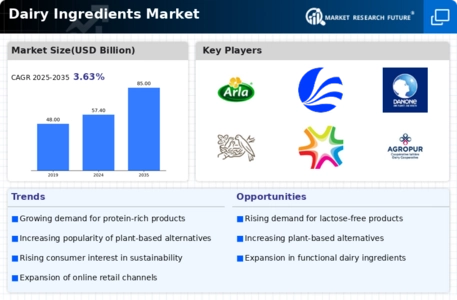
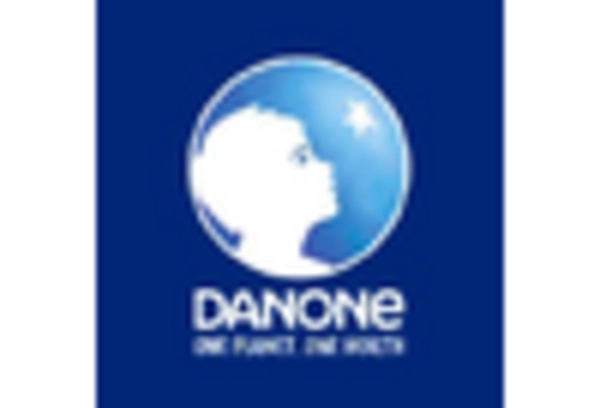
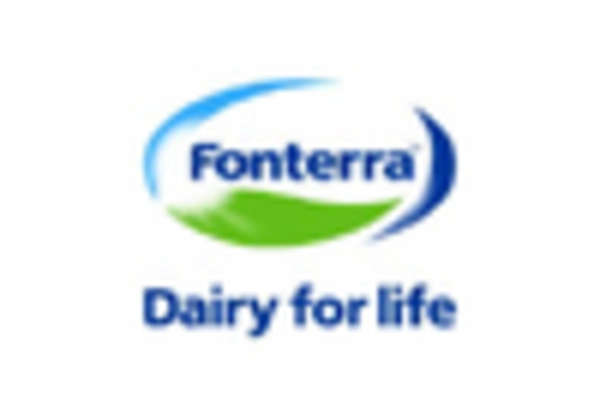


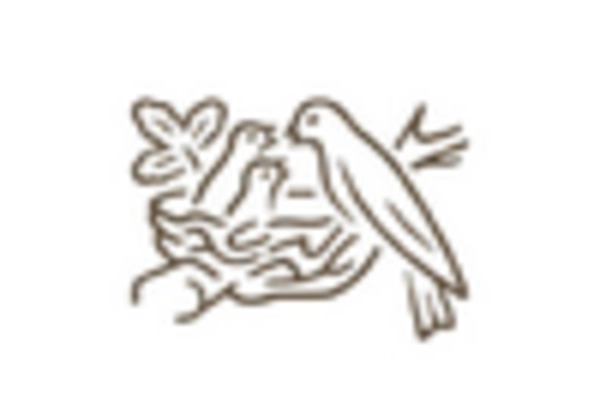
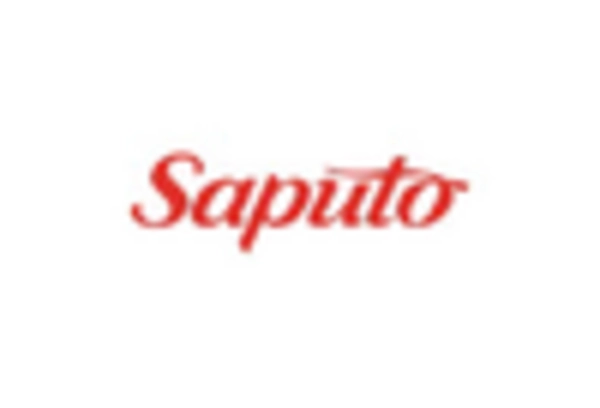









Leave a Comment